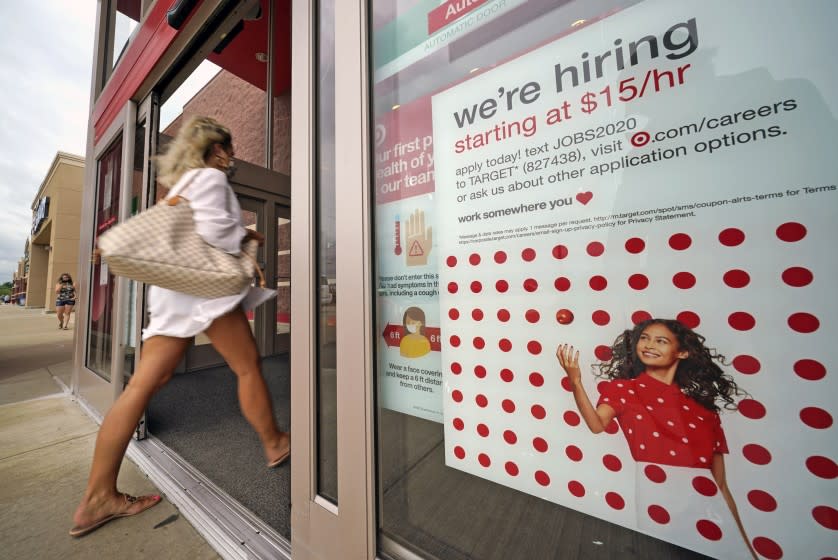Editorial: Too many unfilled jobs? Lower employment barriers, not unemployment benefits

The phrases "we are closed" and "nobody wants to work anymore" were trending briefly Thursday as the Twitterverse grappled with the paradoxical news that job openings had set a record in March — more than 8 million positions unfilled — even as unemployment and underemployment remained far higher than they were before the pandemic. The news about openings came a few days after the Bureau of Labor Statistics reported that the number of new jobs filled in April was far lower than analysts were expecting.
Anecdotes abounded from employers who said they've struggled to find people willing to be hired. And as they've been doing for months, they blamed the extended unemployment benefits the federal government has been providing since March 2020. The extra money — $300 a week, down from the initial $600 — came on top of an average weekly benefit of just under $390 (although that figure varies widely by state), translating to an average wage of $17 an hour. And unlike ordinary wages, those benefits may be tax-exempt, depending on the state and the taxpayer's income.
Republicans have largely opposed the extra benefits, arguing that they discourage people from working. A growing number of GOP-led states have told the feds to keep their money; they are reverting to pre-pandemic benefit levels in the belief that it will spur idled workers to get off the dole.
It might seem obvious that laid-off workers don't have a lot of incentive to take a job that pays less than they are receiving in their unemployment checks. But the data from last year show that most people value a job so much, they will make that choice. And it's not hard to understand why — a job will continue to provide income long after one's eligibility for unemployment benefits runs out, not to mention the dignity and sense of purpose that good jobs provide. A Yale study of time-clock records largely in the food and beverage industry showed that the $600 a week in extra benefits had a negligible effect on whether idled people returned to work.
Another point to consider: Many of the anecdotes about the inability to hire workers are coming from restaurant owners and others in the relatively low-paying service industry. Yet according to the left-leaning Economic Policy Institute, low-wage sectors as a whole showed "notably faster job growth" in April than other sectors. EPI argued that a bigger problem is the lingering pandemic effects on schools, child care providers and families, which are forcing many women to stay home to care for dependents.
We are far closer to normality today than we were a year or even three months ago, so it makes sense for states to restore pre-pandemic mandates that unemployed workers look for work or training and take a job if it matches their skills. But we still have a ways to go, with millions of Americans facing significant barriers to working. The extra benefits may keep some workers out longer, but for most people, they bring the ability to keep paying bills and their mortgage and continue supporting their local economies. The data show that people want to work. Don't punish the ones who can't.
This story originally appeared in Los Angeles Times.

